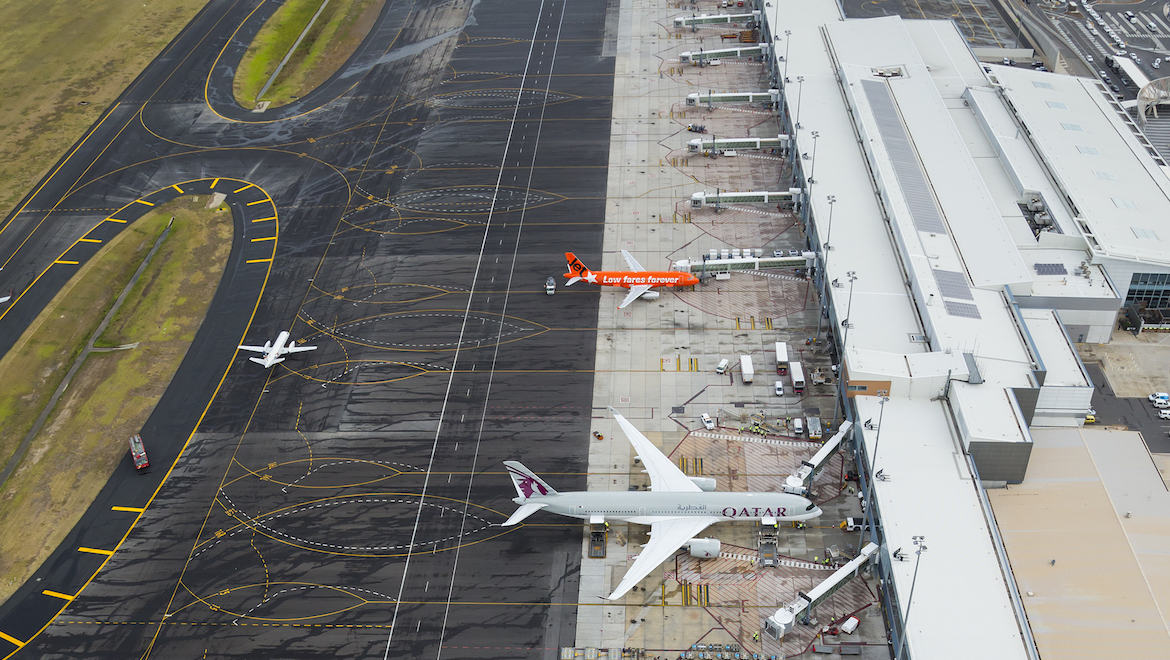
Adelaide Airport expects to more than double its annual passengers tally to 19.8 million passengers by 2039.
The forecast was included in Adelaide Airport’s preliminary draft master plan, released on Monday, which outlines the expected development of the facility over the next two decades including future land use, types of permitted development, as well as noise and environmental impacts.
Adelaide Airport managing director Mark Young said growth at the airport was “inextricably linked to the development of South Australia”.
“We play an essential role in the economic prosperity and development of the state through creating jobs and supporting business, tourism and leisure activities,” Young said in a statement on Monday.
“We are planning and building appropriate levels of infrastructure to stay ahead of this growth and maintain our reputation as one of Australia’s most modern airports.”
The preliminary draft master plan said the number of international passengers was expected to reach three million by 2039, compared with about one million currently, representing a compound annual growth rate (CAGR) of 5.8 per cent.
Meanwhile, the number of domestic passengers was tipped to break through 15 million in 20 years time, from about seven million in 2018, or CAGR of 3.9 per cent.
The growth rates for international and domestic passengers were both broadly in-line with the forecasts in the 2014 master plan.
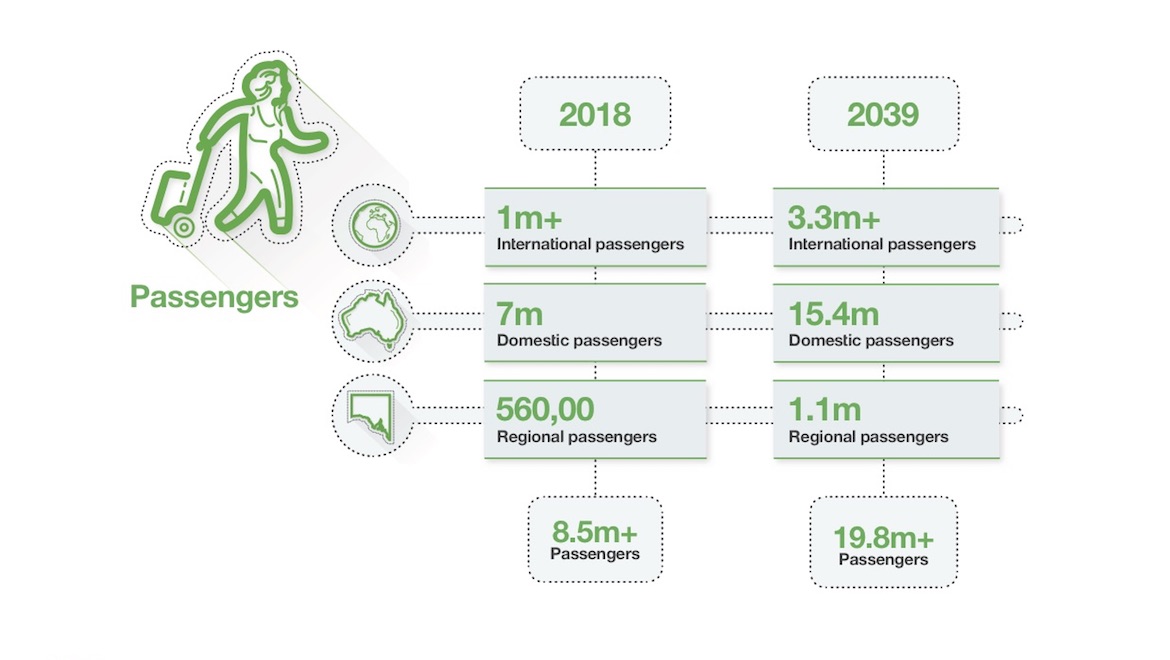
Currently, Adelaide Airport has nonstop passenger flights to eight countries – China (Guangzhou), Hong Kong, Indonesia (Denpasar), Malaysia (Kuala Lumpur), New Zealand (Auckland), Qatar (Doha), Singapore and the United Arab Emirates (Dubai).
Fiji Airways did serve Adelaide between 2017 and 2019. It suspended the route in late July.
Adelaide Airport has sought to increase the number of international flights in recent times, with the addition of China Southern, Qatar Airways and Malindo Air services to the South Australian capital.
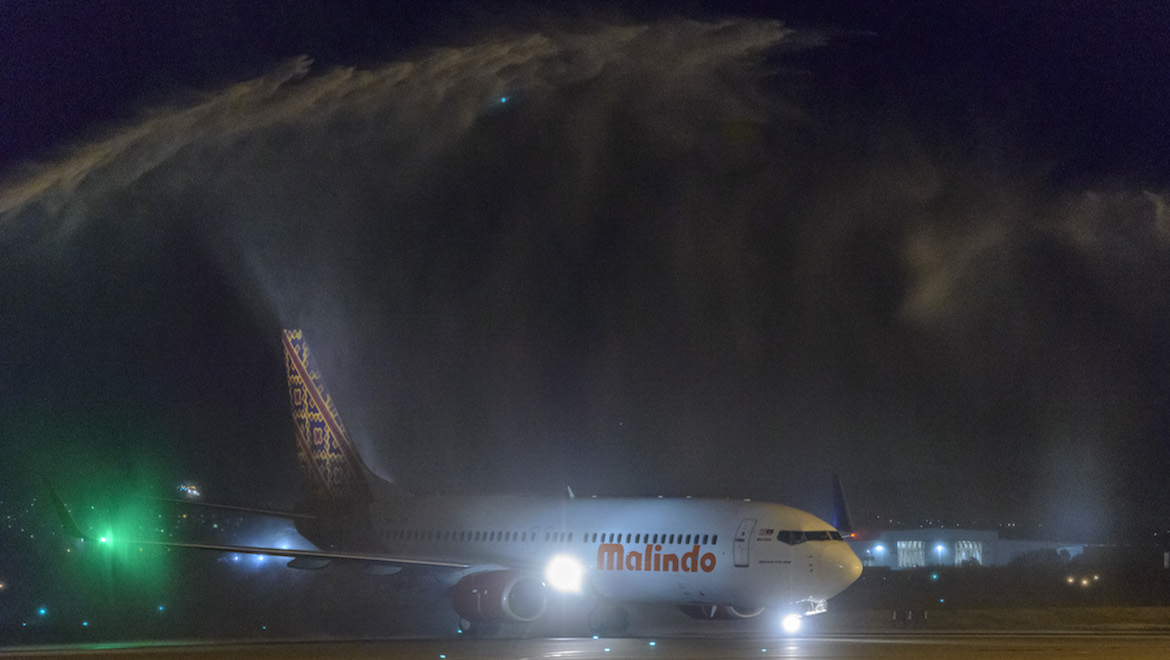
It is keen to add to the lineup with nonstop flights to the United States.
The preliminary draft master plan noted each additional daily international service added between nine and 13 per cent additional international passengers to Adelaide.
“Domestic and international airline capacities are likely to continue to increase, with additional domestic routes and new international carriers operating out of Adelaide Airport,” it said.
“In the longer term, it is likely that increased passenger movements will result from the growth of the South Australian population, the mining investment industry in South Australia and from continued tourism demand from a growing middle class in Asia.
“This demand is likely to include the addition of more international low-cost carriers operating out of Adelaide Airport.”
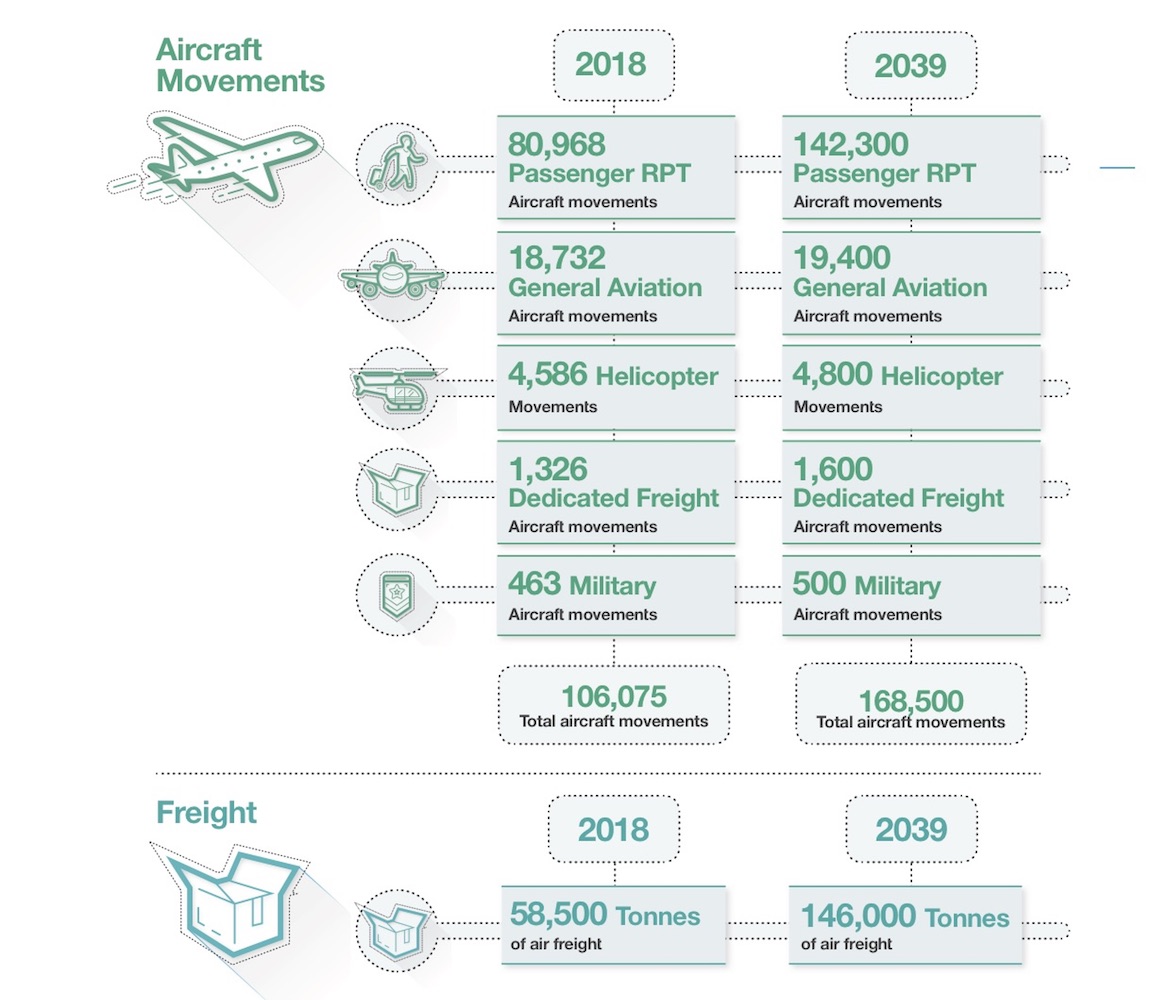
In August 2018, Adelaide Airport began work to expand its terminal facilities.
The three-year project, valued at $165 million, would increase the terminal space by 16,500 square metres, including an additional 7,257 square metres of retail space to boost shopping and dining opportunities for passengers.
In the international precinct, departing passengers would gain more retail and dining space, as well as an expanded duty free shopping area.
There would also be larger immigration and security screening areas, which are being relocated from Level 2 (checkin) to Level 1 – the present arrivals area – where a second baggage belt would be installed.
And the work included new VIP facilities for international departures and arrivals, and a “common user” premium departure lounge for international passengers.
Under the changes, Gate 18 will become a dedicated international gate, but Adelaide Airport planned to continue to use of “swing gates” able to be used for both international and domestic flights depending on demand.
The terminal has six of these gates at present, including two for international narrow-body aircraft.
“The master plan is about the art of the possible, not probable. It does not dictate what will be built, but rather what can be built based on growth conditions and stakeholder considerations,” Young said.
A 165-room hotel opened at the airport in September 2018.
And in April, the airport started a trial of new 3D X-Ray machines and body scanners, as well as an automated tray return system, that allowed travellers to keep their laptops and other electronic devices in their bags when going through the security checkpoint.
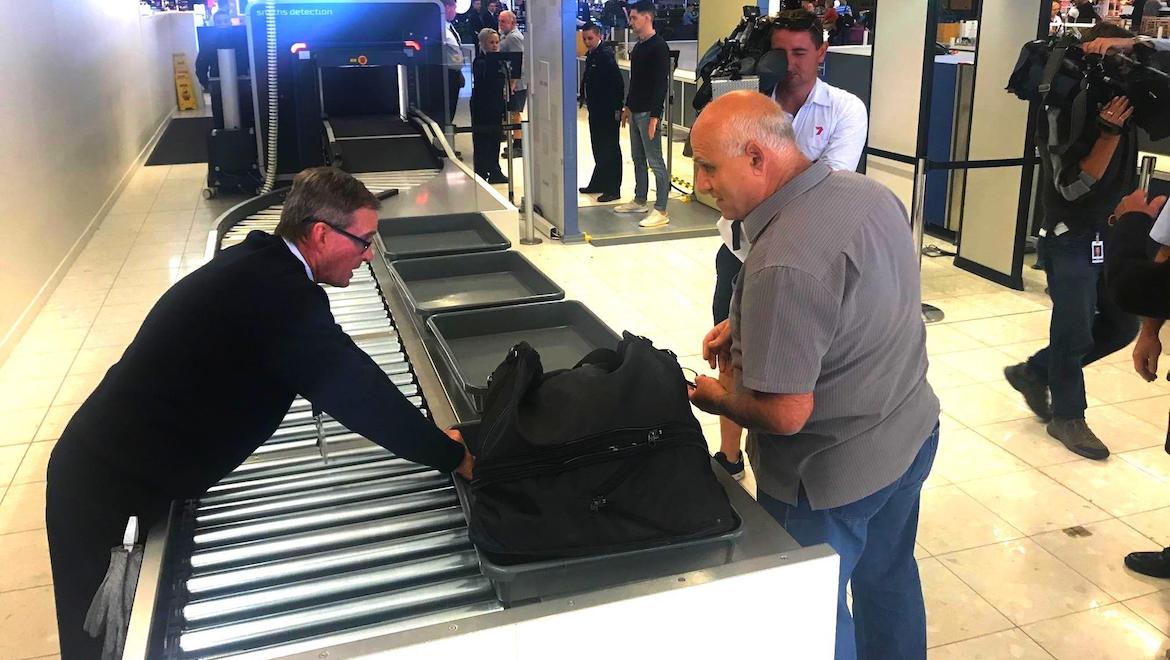
Young said innovation and technology would play a key role in airport development over the next eight years.
“The Adelaide Airport of tomorrow will feature new technologies and processes that make the customer experience faster, easier and more intuitive,” Young said.
“In recent years we’ve witnessed the introduction of self-service check-in and bag drop, permanent bag tags, and SmartGate automated self-service border control.
“Future technologies potentially include smart phone wayfinding for the entire journey from home to your aircraft, permanent bag tags built into luggage, decentralised bag drops such as at your hotel, and combined security and emigration walk-through screening using biometrics.
“At the same time, the safety and security of all airport users is paramount, and our facilities are constantly evolving based on regulatory outcomes.”
The preliminary draft master plan said “no major runway developments are foreseen in the 20-year planning period for this master plan”.
It said Adelaide Airport has preserved and maintained land for a future third runway.
Also, the document said the existing curfew operating at Adelaide Airport between 2300 and 0600, with some exceptions such as medical emergency, freight and mail flights, was unchanged.
Under the Commonwealth’s Airports Act, Australia’s federally leased airports are required to prepare a 20-year master plan every five years.
Adelaide Airport said its preliminary draft master plan would be on public display until October 28. The full document can be found on the Adelaide Airport website.
A revised draft master plan would then be submitted to the Minister for Infrastructure, Transport and Regional Development for approval.
The airport’s previous master plan was approved in 2015.
VIDEO: A time-lapse look at the work on Adelaide Airport’s terminal expansion from the airport’s YouTube channel.












